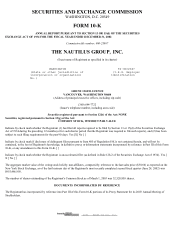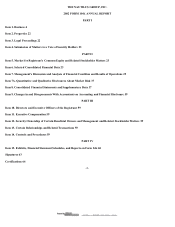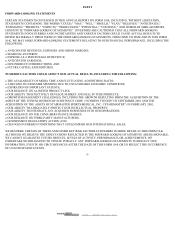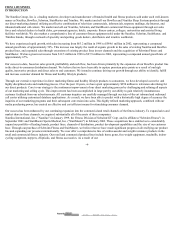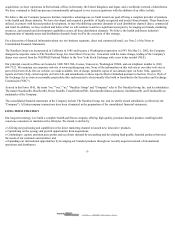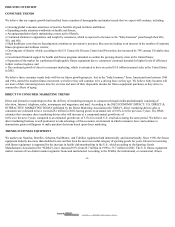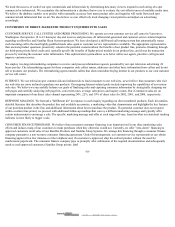Nautilus 2002 Annual Report Download - page 6
Download and view the complete annual report
Please find page 6 of the 2002 Nautilus annual report below. You can navigate through the pages in the report by either clicking on the pages listed below, or by using the keyword search tool below to find specific information within the annual report.
INDUSTRY OVERVIEW
CONSUMER TRENDS
We believe that our organic growth has benefited from a number of demographic and market trends that we expect will continue, including:
o Growing global consumer awareness of positive benefits of good nutrition and fitness;
o Expanding media attention worldwide on health and fitness;
o An aging population that is maintaining a more active lifestyle;
o Continued attention to appearance and weight by consumers, which is expected to increase as the "baby-boomers" pass through their 40's,
50's, and 60's;
o High healthcare costs that are focusing more attention on preventative practices like exercise leading to an increase in the number of corporate
fitness programs and wellness centers;
o Growing rate of obesity which, according to the US Centers for Disease Control and Prevention, has increased by 74% among US adults since
1991;
o Government financial support for health and fitness programs intended to combat the growing obesity crisis in the United States;
o Expansion of the market for sophisticated high-quality fitness equipment due to consumers' continued demand for higher levels of efficiency
in their workout regimes; and
o The continued growth of direct to consumer marketing, which is estimated to have exceeded $1.0 trillion in annual sales in the United States
in 2002.
We believe these consumer trends bode well for our future growth prospects. Just as the "baby boomers," those Americans born between 1946
and 1964, started the modern fitness movement, we believe they will continue to be a driving force as they age. We believe baby boomers will
use more of their increasing leisure time for exercise and more of their disposable income for fitness equipment purchases as they strive to
counter the effects of aging.
DIRECT TO CONSUMER MARKETING TRENDS
Direct and interactive marketing involves the delivery of marketing messages to consumers through media predominantly consisting of
television, Internet, telephone, radio, newspapers and magazines, and mail. According to the 2002 ECONOMIC IMPACT: U.S. DIRECT &
INTERACTIVE MARKETING TODAY published by the Direct Marketing Association (the "DMA"), direct marketing-driven sales to
consumers are estimated to have exceeded $1 trillion in 2002, having grown at an annual rate of 8.8% over the previous 5 years. The DMA
estimates that consumer direct marketing-driven sales will increase at a compound annual growth rate of
8.0% over the next 5 years, compared to an estimated growth rate of 5.5% for overall U.S. retail sales during the same period. We believe our
direct marketing business is well positioned to take advantage of this economic environment in which consumers have and continue to
demonstrate greater willingness to make purchase decisions based upon direct marketing.
TRENDS IN FITNESS EQUIPMENT
We market our Nautilus, Bowflex, Schwinn, StairMaster, and Trimline equipment both domestically and internationally. Since 1990, the fitness
equipment industry has more than doubled in size and has been the most successful category of sporting goods for years. Interest in exercising
with fitness equipment is supported by the increase in health club memberships in the U.S., which according to the Sporting Goods
Manufacturers Association (the "SGMA"), have increased 63% from 20.7 million in 1990 to 33.7 million in 2001. The U.S. fitness equipment
market consists of two distinct market segments: home and institutional. According to the SGMA, the institutional, or commercial, fitness
-6-
2003. EDGAR Online, Inc.

